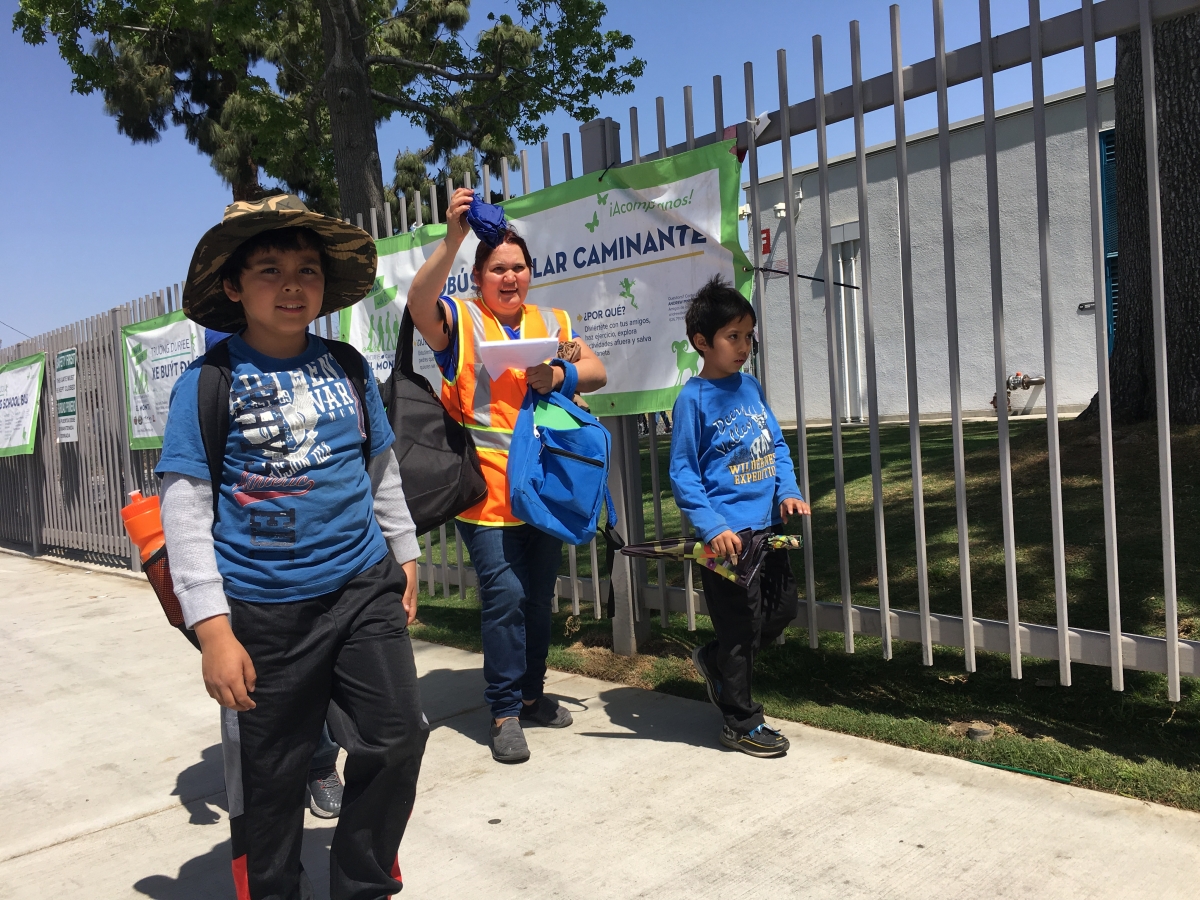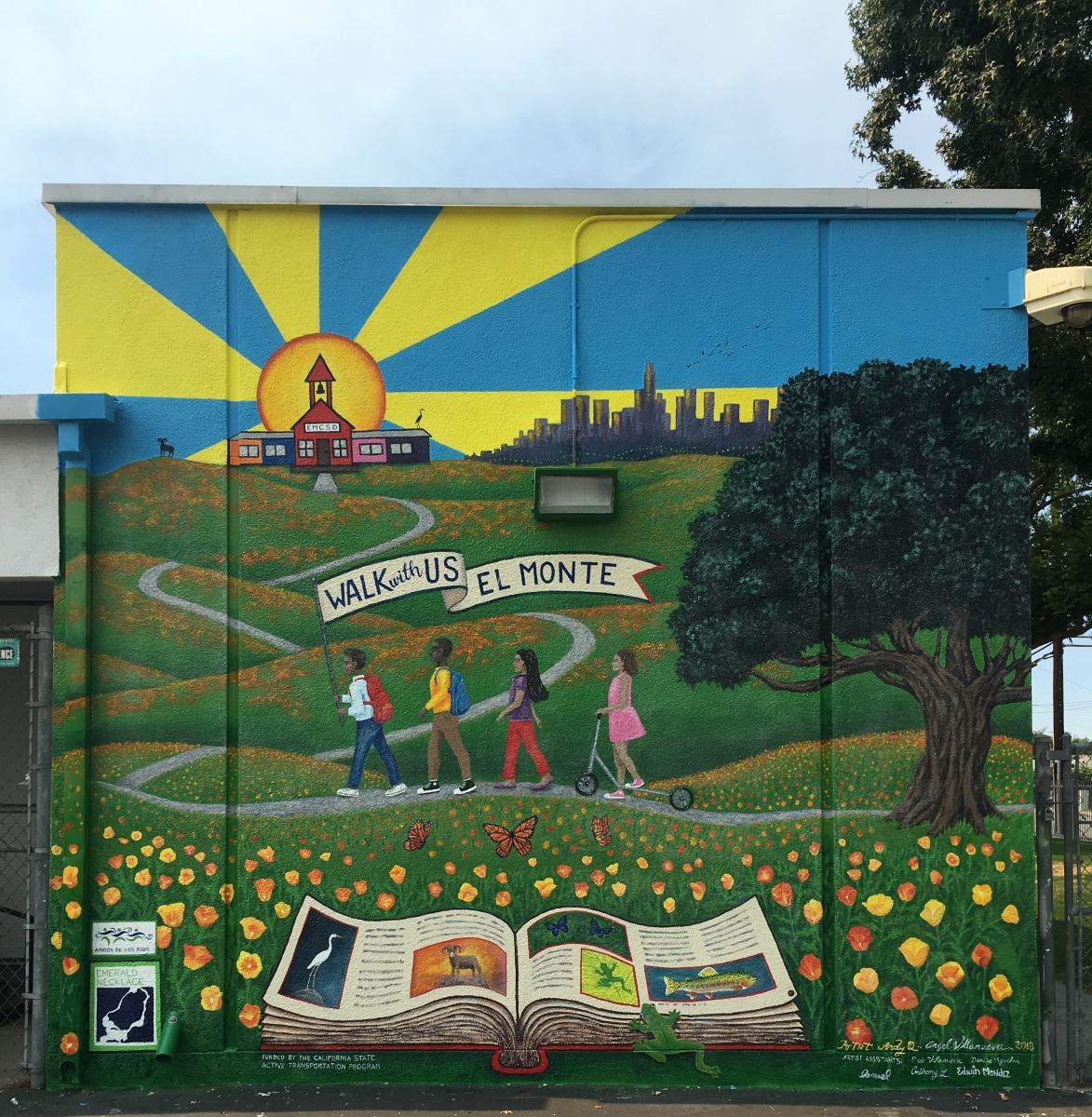
Walking school buses are one of the most effective ways to change how kids travel. That’s why it’s inspiring to hear about successful walking school bus programs that find fun and creative ways to get kids moving.
A year-long walking school bus initiative at Durfee Elementary School in El Monte, California, took the walking school bus model and adapted it to fit with the needs of local kids, families, and an enthusiastic non-profit partner. The results were exciting!
Alta Planning + Design led the initiative in partnership with Amigos de los Rios, a local environmental group, with some minor support from our team. Over the course of the year, the program ran six daily walking school bus routes, most running both before and after school. With an average of 68 walkers participating in the walking school buses every day, participating students took more than 22,000 walking trips over the course of the year.

One unique component of the walking school bus program was the partnership with Amigos de los Rios, which trained walking school bus leaders to include environmental lessons as part of their time walking with kids. Students engaged in activities that supported connections with the natural world and encouraged curiosity. For example, one project involved measuring how temperatures under tree canopies differed from temperatures in exposed areas. Students and leaders also learned about plants and trees along their routes, and each route was named after a different local animal. Activities at school also supported the health and environmental lessons of the walking school buses. The healthy habits that students developed were reinforced by a colorful mural designed by a local artist at the school, which celebrates the walking school buses and connections with nature.
A number of lessons emerged from the initiative:
- Walking school buses are a very safe way for kids to get to school! Over the course of the almost 23,000 miles that students walked, there were no injuries or significant problems. Only two incidents were reported over the course of the year-long program—one complaint of foot pain, and one incident in which dogs bothered a walking school bus leader on her way to get children from the school.
- Person-to-person outreach and support for different languages spoken at home are important for participation. The student population at Durfee is about three-quarters Latino and one-quarter Asian American/Pacific Islander, but most student participants were Latino, probably because the route leaders were mostly Latino. Outreach materials were translated into Spanish, Mandarin, and Vietnamese, but more investment in person-to-person outreach with Asian and Pacific Islander families might have dispelled concerns that the program was just for Latino students and increased participation by other kids.
- Paying route leaders brings benefits to the stability of the program as well as the families involved. Many of the route leaders reported that family duties made it difficult to find employment, but that working as a walking school bus leader brought economic benefits for their family. Other families were able to save money on public transportation fares, which they had previously used to take children to school. Leaders also reported that the walking school bus increased their social contacts with other families.
- The walking school buses not only increased students’ physical activity, but also brought health benefits to the route leaders. All leaders reported losing weight, with other concrete health improvements also noted.
The program developed a short and easy Do-It-Yourself Guide in English and Spanish to jump-start similar programs in El Monte and beyond. The El Monte walking school bus website contains a wealth of other materials too, including Youtube videos on how to start and run a program, and more.
As Principal Juan Munoz explained, thanks to the walking school buses, “children have demonstrated more confidence walking on streets; they follow the rules and watch out for each other.” This creative walking school bus program brought a wealth of benefits to the Durfee School community—healthier kids and parents, improved economic stability for families, more environmental awareness, and a stronger community.
